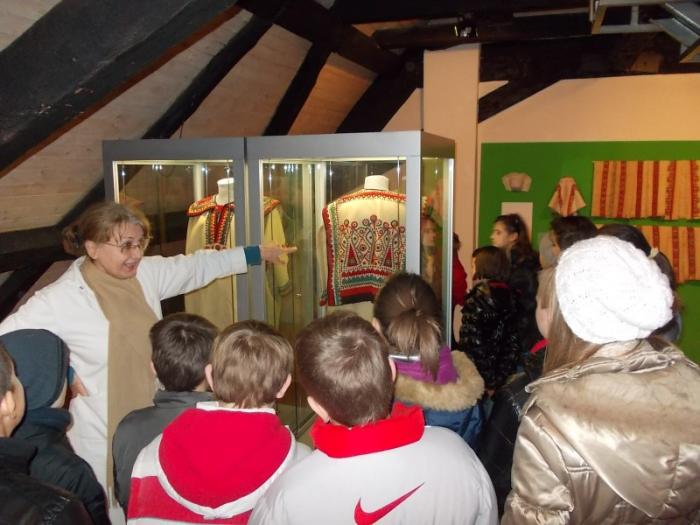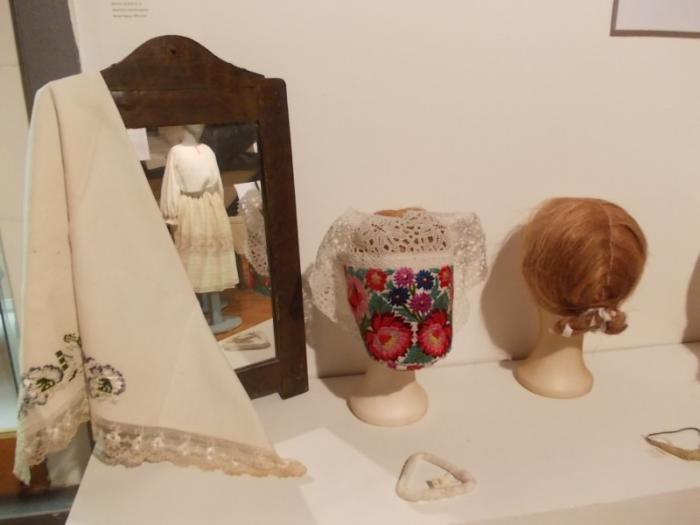| « April 2024 » | ||||||
| Mo | Tu | We | Th | Fr | Sa | Su |
| 1 | 2 | 3 | 4 | 5 | 6 | 7 |
| 8 | 9 | 10 | 11 | 12 | 13 | 14 |
| 15 | 16 | 17 | 18 | 19 | 20 | 21 |
| 22 | 23 | 24 | 25 | 26 | 27 | 28 |
| 29 | 30 | 1 | 2 | 3 | 4 | 5 |
| 6 | 7 | 8 | 9 | 10 | 11 | 12 |
Ukupno: 1226435
Danas: 107

A Local Folklor Display ''What the Maidens Wore“
The inhabitants of Sesvetsko Prigorje lived very diffenent lives 80 years ago than they do today. They dressed differently too. The Prigorski Museum in Sesvete hosted an exhbit about what young girsl and married women wore in those days.
The Sesvetsko Prigorje's ''ijekavski“ dialect is a kajkavian dialect. Because of this, a young unmarried maiden was not called a ''dekla'' but rather a ''diekla'' much like the present dialect heard from older ''Prigorci'' people today. A ''diekla'' is a young woman before she gets married. Much information about life in the past from various areas can be learned by visiting the ethnographical exhibits in the Prigorski Museum. Some of the information can be shocking. This type of life was common in Prigorje up until the Second World War. Her are a few cartoons from that ime:
Young women and men often got married at about sixteen years of age. Mariages were arranged by their parents. Girls and boys were not allowed to socialize before marriage!
One old lady told the currator of the museum, Vondraček Mesar, that her mother had spanked her because some older girls had talked her into playing wedding with a boy where she pretended to be the bride.
Parents would often scare girls with the threat of boys!
The old lady's father finally accedped his daughter's wishes that she not marry his apprentience.
Children were raised so that they would never say ''NO'' to their parents. This is why they would not reject a match made by their parents.

The currator of the museum and author of the exhibition, Jagoda Vondraček Mesar, took us on a tour of our area in the past.

Before marriage, a maiden had long hair braided into two braids. After marriage, she no longer wore braids, but a bun, and her head was covered with a lace scarf called a ''paculica''. Women did not take off their ''paculica'' even inside their homes. When a women would go out into the garden, she would put on another scarf on top of the one she was already wearing.
After marriage, the daughter-in-law would comb her hair into a bun and wear a lace scarf over the bun which she would not remove, not even in the house, until she went to bed.
Cloth was made from flax which was grown in the fields. Flax was woven into cloth on a loom.
In the hilly area of Sesvetskog Prigorja, beside the mountain Medvednica, only hemp was grown, while both this and flax were grown in the lowlands.
Wool was hit with a stone so that in the cloth you would not see the individual threads. This was called ''stupala''.
Colourful clothing called ''šara'' also existed. There was a lot of red used, but there was a lot of plain clothing aswell. Clothes with less decorations and duller colours were called ''proščina''. Women had the choice of colourful clothing or ''proščina''. It was not expected that the clothing worn by young girls and young daughter-in-laws be dull or simple. They were allowed to wear colourful clothing.
Photo gallery
In order to better understand the cultural past in Prigorju, here are a few Prigorske songs and dances.



